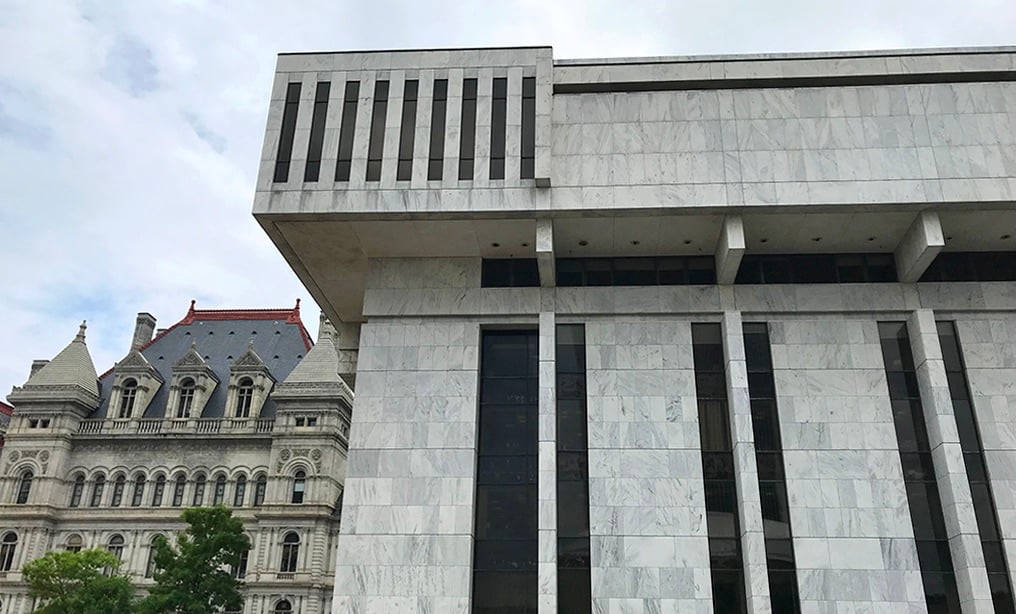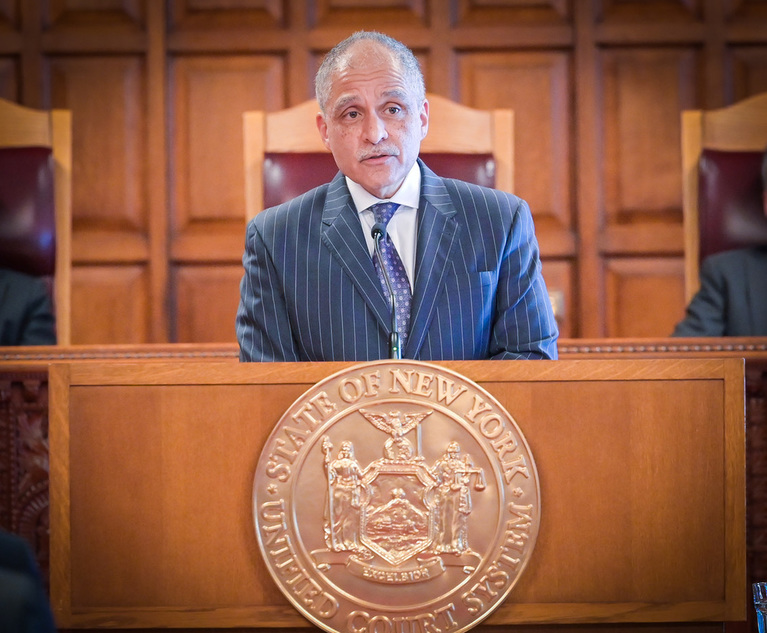A New York appeals panel sided with top court officials Tuesday in a high-profile case over the system’s decision to oust dozens of older judges due to a budget cut.
The majority opinion from the New York Supreme Court, Appellate Division for the Third Department said a Suffolk County Supreme Court judge was incorrect in annulling the austerity measure, which has become a topic of blistering criticism against court administrators.
The decision is a legal setback for multiple state appellate judges who sued after being told they would be forced off the bench. The litigation listed Chief Judge Janet DiFiore and the state court system’s Administrative Board as defendants in the suit.
The lawsuit argued that top court officials did not make individualized reviews on whether judges should be allowed to continue serving, but instead based their decision only on the budget troubles.
New York’s state court system announced last fall that it had denied certification to 46 older judges as officials tried to navigate an approximate $300 million cut to the judiciary budget. The decision morphed into the judiciary’s most controversial austerity measure of the pandemic era and has become a topic of blistering criticism against court administrators.
Receiving certification allows state judges to continue serving on the bench after they reach 70 years old.
The appellate ruling involved a panel made up of three justices from the Appellate Division, Third Department and two from the Appellate Division, Fourth Department.
All three justices from the Third Department found that the Administrative Board “acted in accord with the governing standard and within the scope of its broad authority in basing its ultimate decision on the overall needs of the court system,” according to the majority ruling.
“It should be recognized that the continued services of the petitioner justices would advance the needs of the court in managing an expanding caseload,” read the opinion from Justice Michael Lynch. “That positive contribution, however, is not the deciding factor, as the Board is charged with balancing the costs of certification with the overall needs of the court system.”
Justices Christine Clark and Molly Reynolds Fitzgerald concurred with Lynch’s opinion.
In a minority opinion, the two justices from the Appellate Division, Fourth Department—Justices John Curran and Nancy Smith—found they would affirm the lower court’s decision to annul the move to oust the older judges.
“In our view, that determination was properly annulled because, in denying the applications for certification, the Board did not fully apply the two requisite criteria for certification set forth in NY Constitution,” according to the opinion, which was written by Curran.
“Therefore, in that regard, we respectfully dissent,” said the opinion.
Y. David Scharf, an attorney for the older appellate judges who sued, said they intend to bring the case before the state’s Court of Appeals as quickly as possible and hope to have oral arguments in September.
A unique dynamic has loomed over their case from its onset: The older judges filed suit against court administrators in the same court system those officials oversee.
The appellate judges on the panel were tasked with deciding the outcome of a case that is deeply sensitive to the state court system and New York’s legal community.
Queens County Supreme Court Judge Carmen Velasquez, who serves as president of a state judge’s association, issued a statement saying they are “deeply disappointed with the appellate decision.”
Velasquez has previously said that targeting the older judges for the chopping block is “outrageous.”
State court spokesman Lucian Chalfen issued a statement saying they “are pleased, but not at all surprised, with this ruling.”
“The majority decision is strongly rooted in the law and correctly acknowledges the difficult, but necessary, determination the Administrative Board was compelled to make,” he said in the statement.
Court officials have argued the decision was necessary due to a 10% budget cut from Gov. Andrew Cuomo, which came out to a $291 million reduction this fiscal year.
But the cost-cutting move is only saving $7 million this fiscal year, which is about 2% of the $291 million cut, according to the court system’s own figures. That has given fodder to critics of the measure, prompting some to note the savings this budget year equate to a rounding error in a judicial system with a multibillion-dollar budget.
Chief Administrative Judge Lawrence Marks says the decision was not just about the $7 million in savings this fiscal year, which concludes at the end of March.


 Appellate Division, Third Department courthouse in Albany. New York State Capitol is seen on the left. Photo: Monika Kozak/ALM
Appellate Division, Third Department courthouse in Albany. New York State Capitol is seen on the left. Photo: Monika Kozak/ALM





